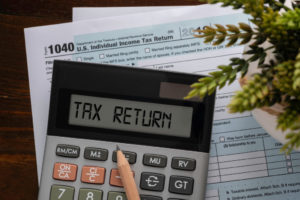Recovery Rebate Credit – How Much Can I Claim for 2021?

By Alex Smith, CPA
Some taxpayers received letters from the White House in December 2021 or January 2022 telling them they may be eligible for an additional direct payment from the Federal government. You may be wondering what these letters are, what they are trying to tell you and if you are eligible for another payment when you file your 2021 tax return. We will discuss eligibility requirements and some IRS guidance to help you determine if you will be able to claim any more credits on your taxes this year.
To refresh your memory, the IRS began issuing the third round of Economic Impact Payments (EIP) in March 2021 and continued through December 2021. The Recovery Rebate Credit is basically just the third EIP but claimed on your tax return instead of being mailed to you. The maximum credit is $1,400 per person, with each qualifying dependent claimed on a tax return eligible for an additional $1,400 payment. So, a single person with no dependents has a maximum credit of $1,400; married taxpayers who file a joint return that claims two qualifying dependents have a maximum credit of $5,600.
Those who qualify as dependents are not just children under 17, but also older relatives like college students, adults with disabilities, parents and grandparents. There are additional amounts for all dependents: eligible individuals get up to $1,400 for each qualifying dependent claimed on their returns. A new child or a parent or grandparent moving in with you (if you provided more than half their support in 2021), might make you eligible for more credit on your return than you might have received a check for previously.
But of course, there are limitations on claiming a credit for the payment on your return. First, if you already received your third EIP, you are not eligible for a credit for the same amount on your return. Then there are income limitations that come into play if you did not already receive an EIP which are discussed below.
Taxpayers with adjusted gross income (basically, this would be all your income added together before you take standard or itemized deductions out) lower than the amounts below would be eligible for the full credit (if they did not already receive their third EIP). If income falls in the range shown below, then the credit is reduced until it goes down to zero when you hit the upper limit:
- $150,000-$160,000 if married and filing a joint return or if filing as a qualifying widow or widower.
- $112,500-$120,000 if filing as head of household.
- $75,000-$80,000 for all others.
There are many factors that can affect the calculation of the amount of Recovery Rebate Credit you are eligible to claim on your 2021 taxes. Below is a non-comprehensive list of factors that could affect your Recovery Rebate Credit.
- Income change — Some people may have received less than the full third Economic Impact Payment because their adjusted gross income was too high. Lower income in 2021 could make you eligible to claim the credit.
- Qualifying dependent — If an individual became your dependent in 2021, including by birth or adoption, you may be eligible to claim the credit for the dependent on your 2022-filed 2021 tax return.
- No longer a dependent — Individuals who were claimed or could be claimed as a dependent on someone else’s tax return for 2019 or 2020 may now be eligible if they were claimed as a dependent on someone else’s tax return for 2021.
If you believe you will be eligible to claim any amount of Recovery Rebate Credit on your 2021 tax return, please take the time to discuss the situation with one of our tax professionals.
